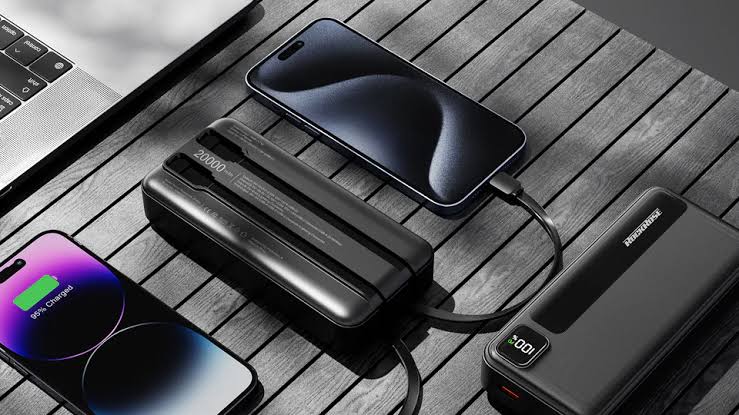Power Bank Buying Guide: Capacity, Speed, and What Really Matters

Running out of battery can be incredibly frustrating, especially when you’re away from a power outlet. Whether you’re traveling, working remotely, or simply out for the day, a power bank can be your lifeline. But with countless options available, how do you choose the right one?
This guide breaks down everything you need to know from capacity and charging speed to features that truly matter.
Understanding capacity: How much power do you need?
The first number you’ll encounter when browsing power banks is the mAh rating (milliamp hours). This tells you how much energy the power bank can store. But don’t be fooled bigger isn’t always better for everyone.
- 5,000–10,000 mAh: Best for light use. One or two full charges for your smartphone.
- 10,000–20,000 mAh: A great middle ground. Ideal for power users who rely heavily on their phones or need to charge multiple devices.
- 20,000+ mAh: For serious needs like travel, camping, or working remotely with several gadgets.
Just keep in mind, you won’t get 100% of the advertised capacity due to energy loss during voltage conversion. Usually, you can expect around 60–70% usable power.
Charging speed: Why it matters more than you think
Fast charging isn’t just convenient it’s essential if you’re in a hurry. A high-capacity power bank isn’t much good if it takes forever to charge your phone.
Here’s what to look for:
- Wattage (W): The higher the watts, the faster the charge. 18W and above is great for fast-charging phones and tablets.
- Power delivery (PD): Especially useful for iPhones, iPads, and even some laptops.
- Quick charge (QC): Works well with many Android phones powered by Qualcomm processors.
Remember, both your device and power bank must support these protocols to get fast charging. Also, use high-quality cables for the best performance.
Ports and compatibility: Don’t overcomplicate it
More ports can be helpful, but only if you actually need them. Take a moment to consider what devices you usually charge.
- USB-A: The traditional port; still common and widely compatible.
- USB-C: Becoming the new standard due to faster speeds and versatility.
- Micro USB: Mostly outdated and usually only used to charge the power bank itself.
A solid power bank should at least include one USB-C port for both input and output. Avoid models that rely solely on Micro USB unless you’re on a strict budget.
Portability: Size vs. Power
Large capacity often means a heavier, bulkier device. But do you really need a giant brick in your bag?
Here’s a quick guide:
- Compact models (5,000–10,000 mAh): Easy to slip into a pocket or purse. Best for everyday use.
- Medium models (10,000–20,000 mAh): Great for daily work and travel, fitting easily into backpacks.
- Large models (20,000 mAh and up): Best for extended periods without access to power like hiking, camping, or long flights.
If you travel by air frequently, note that most airlines limit carry-on power banks to 27,000 mAh (or 100Wh). Anything larger might be confiscated.
Safety and build quality: Don’t compromise
When it comes to power banks, safety is non-negotiable. Cheap, unregulated models can overheat, short-circuit, or even catch fire.
Look for reputable brands and certifications like:
- CE
- FCC
- RoHS
Good power banks also include built-in safety features such as:
- Overcharge protection
- Short-circuit prevention
- Temperature control
- Auto shut-off
Some even feature a digital display to show remaining battery percentage—a small but helpful touch.
Extra features: Worth it or just gimmicks?
Modern power banks offer more than just backup power. Here are some extras you might appreciate:
- Wireless charging: Great for Qi-enabled phones. No cables needed.
- Solar charging: Handy for outdoor use, but slow in practice.
- Built-in cables or wall plugs: Convenient if you travel light.
- Pass-through charging: Lets you charge your device while recharging the power bank.
While these features are nice, they should never replace the basics like fast charging, reliable performance, and good capacity.
Conclusion: Choose what truly fits your lifestyle
The best power bank isn’t the one with the highest specs it’s the one that suits your daily routine. If you’re always on your phone, go for fast charging. If you’re away from outlets for long hours, opt for higher capacity. And if portability matters most, stick with a sleek, compact model.
Above all, don’t skimp on quality. A reliable power bank means less stress, fewer battery warnings, and peace of mind wherever you go.

